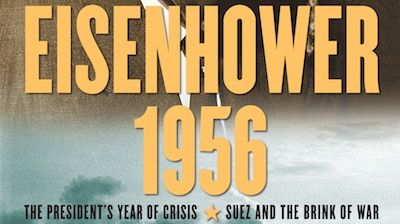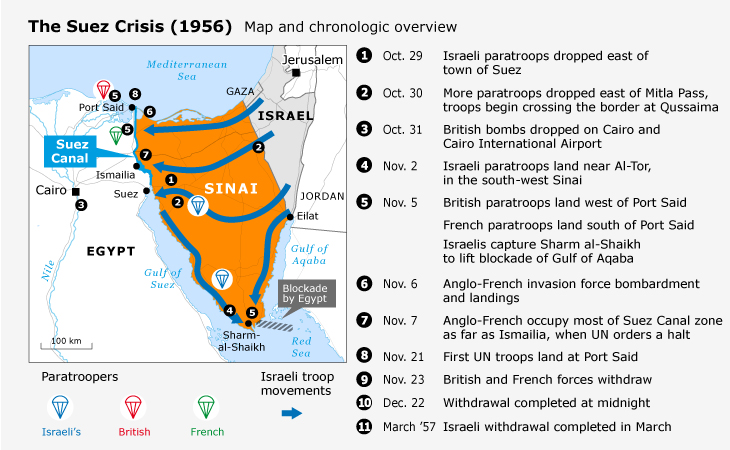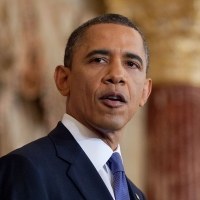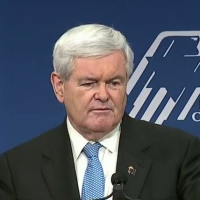![]()
Fri, Feb 1, 2013 | MEForum | by Alexander H. Joffe
Originally published in The National Interest.
What is the proper balance between firmness and flexibility for U.S. policymakers when dealing with Middle Eastern politics? To what extent does history offer guidelines? The Washington Post‘s David Ignatius has reported that Chuck Hagel, nominated to be the next secretary of defense, has given President Obama and others copies of Eisenhower 1956, a book by David A. Nichols about the Suez Crisis of that year, and has endorsed the thirty-fourth president’s hard line against Israel.
It appears that Hagel sees Eisenhower’s demand that Israel leave the Sinai Peninsula, which it captured in a one-hundred-hour campaign in late October and November of 1956, as an explicit model for future relations, where American demands for Israeli withdrawals will be acceded to, if Israel knows what’s good for it. But 1956 was about more than Israel in the Sinai. These offer more useful lessons for policymakers.
The brief and ill-conceived campaign of Israel, Britain and France to capture Sinai and the Suez Canal grew in part out of American policy failures. Since the late 1940s, America’s primary goals in the region were to halt the spread of Communism and Soviet influence, maintain the flow of oil from friendly regimes, and to manage the Arab-Israeli relationship. By the end of that decade the oil still flowed, but the rest was in tatters.
At every turn, the United States waddled into Arab and Muslim politics it did not understand and failed to take Israeli concerns seriously. It also thought that spending vast amounts of money on economic development would westernize Arab thinking and generate gratitude, and that military aid to Arab nationalist regimes would ensure stability.
Picking up where the Truman administration had left off, in 1953 and 1954 the Eisenhower administration proposed a variety of regional water-development plans. These failed, in part because no Arab state wanted to show “weakness” by agreeing to deals that involved Israel. Meanwhile, Egypt’s economic warfare against Israel, including closure of the Suez Canal and Straits of Tiran, went unchallenged by the United States, which was courting Egyptian President Gamal Abdul Nasser.
Failure prompted the Eisenhower administration to go all in on peacemaking plans. Operation Alpha in early 1955 proposed a comprehensive settlement of the Palestinian refugee issue, territorial swaps that gave major portions of the Negev to Egypt in order to create contact with Jordan, and massive military and economic aid, as well as U.S. and British peace guarantees.
Nasser rejected the plan and demanded Israel evacuate the Negev completely. Palestinian, Syrian and Saudi officials also rejected it. What U.S. Secretary of State John Foster Dulles had called “shock treatment” for Israel failed largely because it neglected the simplest rule of Middle East negotiations: Never open with the final bid.
Long fearful of Soviet designs for the northern Mediterranean and Western Asia, the United States provided military aid to Turkey and Pakistan in 1954. The next year, Iraq, Turkey and Britain signed the U.S.-supported Baghdad Pact, but this led Egypt, Syria and Saudi Arabia to sign an agreement later in that year opposing the pact. U.S. offers to Nasser to support construction of the Aswan High Dam enticed him to give up his opposition. But this enraged Iraq, since by September 1955 Nasser had succeeded at getting both U.S. aid and Soviet arms from Czechoslovakia.
The direct lead-up to the 1956 war was marked by similar U.S. miscalculations. Running out of options, Dulles turned to the UN, which promptly demanded Israeli concessions. Increasing Arab cross-border attacks were met by Israeli retaliation, but Washington and the UN condemned only the latter. The U.S. refusal to provide Israel with arms, despite the Egyptian deal with the Soviets, heightened a sense of desperation and a search for new allies, namely Britain and France. Nasser’s nationalization of the Suez Canal in July 1956 lit the final match but Eisenhower’s four-month diplomatic scramble to prevent war failed.
Under pressure from Eisenhower, Israel, France and Britain withdrew their forces. Soviet forces, which had invaded Hungary in October 1956, did not. American diplomacy that had been concerned with the apparent similarities between the two events could not make the contrasts clear in the UN. But Eisenhower and Nixon still campaigned successfully on their having kept the United States out of direct confrontation with the Soviets and won the November elections. American liberals and non-interventionists were impressed, but American adversaries were not.
By the end of the 1950s, American influence in the region was at a low ebb, thanks in part to Eisenhower’s foreign policy and the 1957 “Eisenhower Doctrine,” which promised economic assistance and military intervention for threatened states. Though the United States had been willing to provide economic aid to Egypt even after the 1955 Czech arms deal, in 1958 the Soviet Union partnered with Egypt to build the Aswan High Dam. It also became Egypt’s sole arms supplier, goading it ever closer toward war, which came in 1967.
After Suez, Israel’s relationship with France deepened, and the decision to begin an Israeli nuclear program was taken. The brief unification of Syria and Egypt into the “United Arab Republic” in 1958 had fewer ramifications than the Iraqi revolution, which overthrew the royal family and set Iraq firmly on the road to fascism. This helped set in motion the Lebanon crisis of 1958, in which the United States intervened militarily to prevent the Christian leadership of that country from being overthrown. The Lebanon crisis also featured a Soviet nuclear threat. The United States and Britain were additionally forced to intervene militarily in Jordan in 1958.
Hagel could point to 1956 as an example of unintended consequences and how no good intentions or grand bargains go unpunished in the Middle East. Or he could point to 1956 as an example of how incommensurable promises to unreliable partners interested solely in extracting money and weapons from superpowers inevitably end in failure. He could even note that forcing allies into concessions is less impressive than successfully exerting pressure on adversaries. These, the real lessons of 1956, are unlikely to have been his message.
Alex Joffe, an archaeologist and historian, is a Shillman-Ginsburg Fellow of the Middle East Forum.



 RSS
RSS












Latest Comments
Hello Mike, Thank you for your positive feedback to the article. I felt there wasn’t too much critical analysis of ...
Thanks for this considered and well constructed article. A follow up article on the manner in which the editorial contro...
THE CLUELESSNESS OF CLAIMING THAT OBAMA'S MIDDLE EAST POLICIES WERE A FAILURE CANNOT BE FURTHER FROM THE TRUTH, WHAT THE...
As long as Obama is the president of the usa do not trust the us government......
Thank you for an good read....